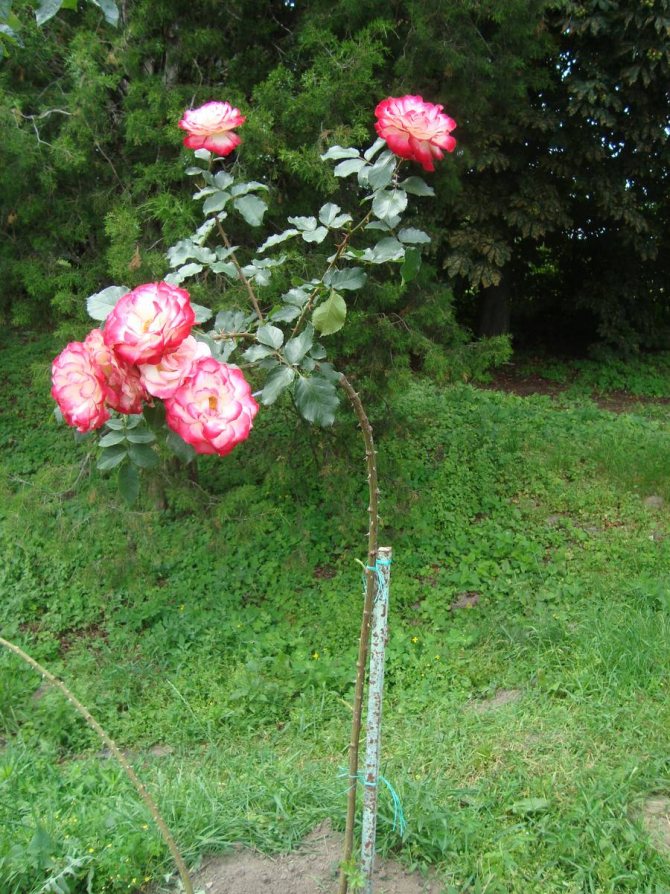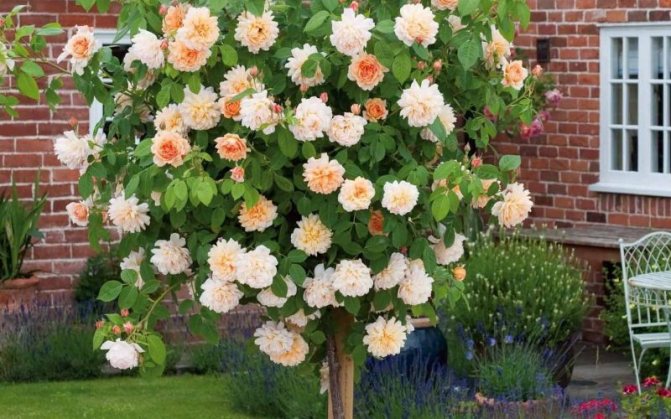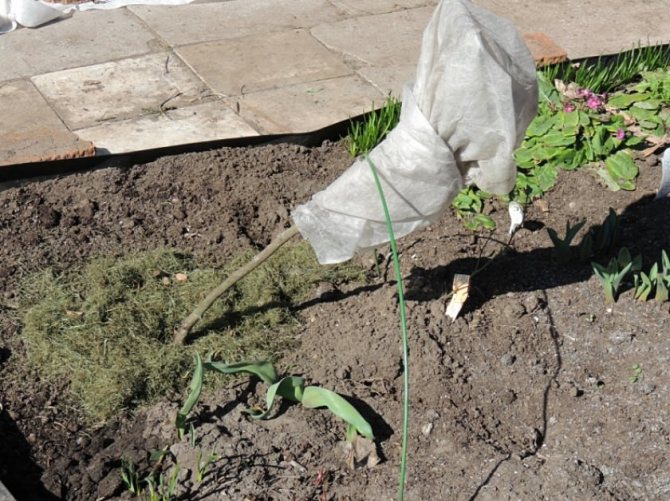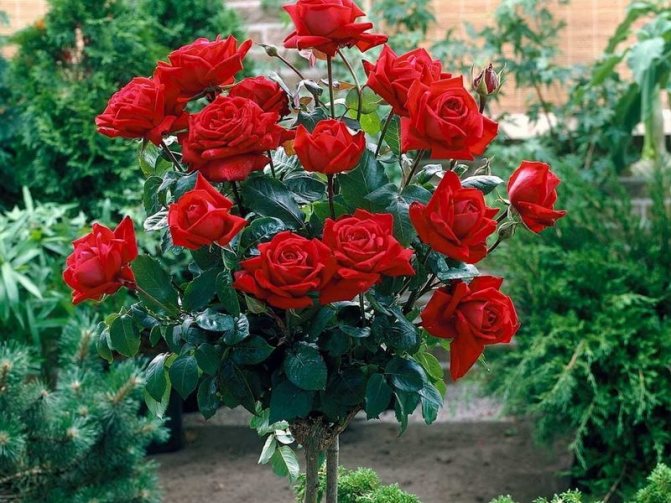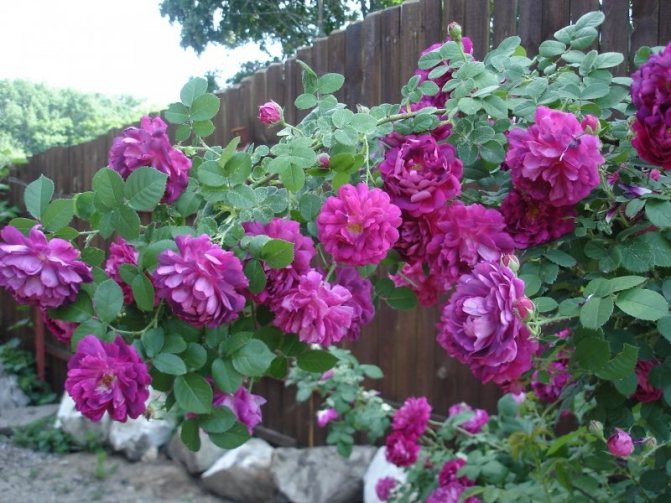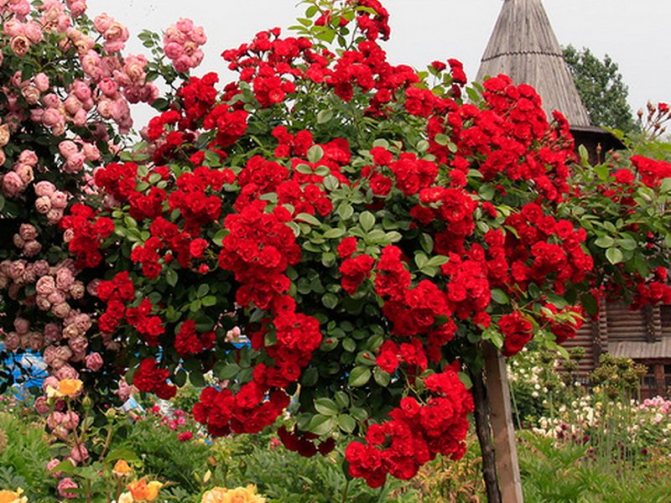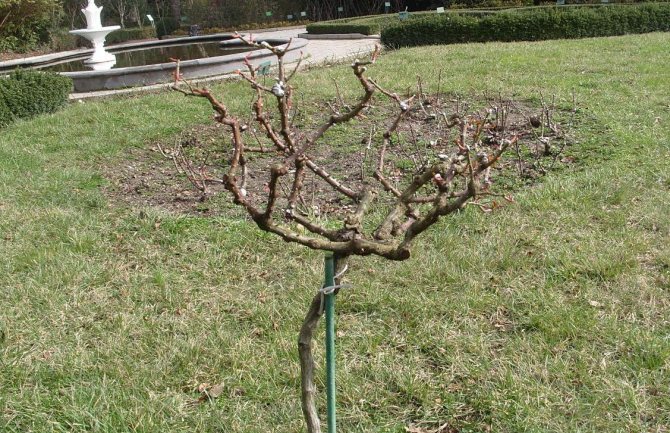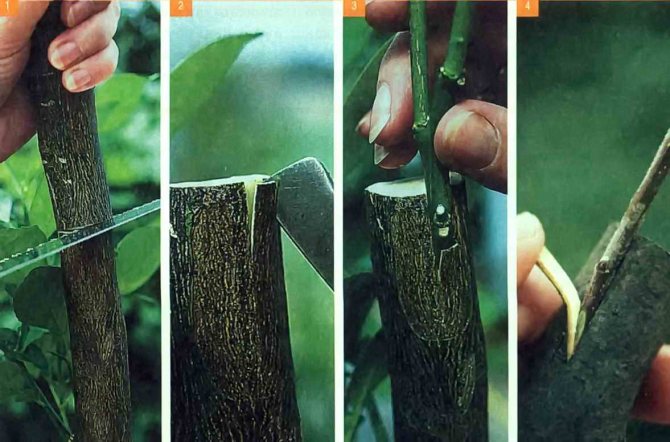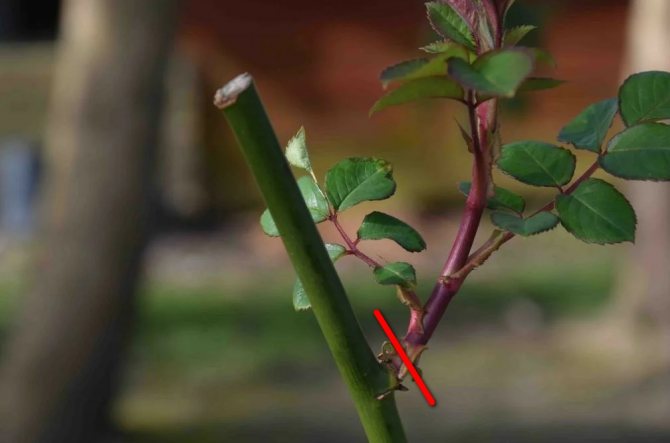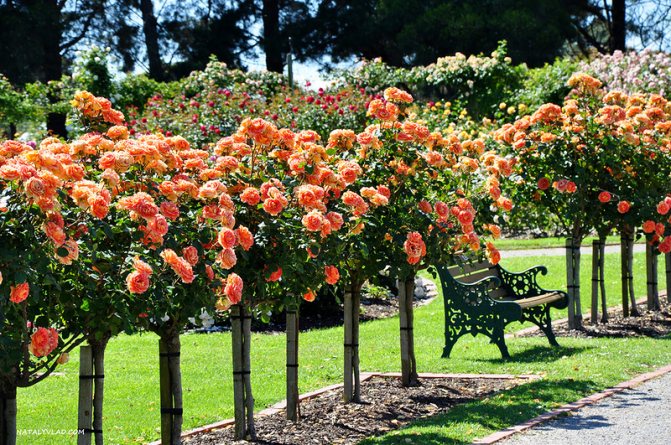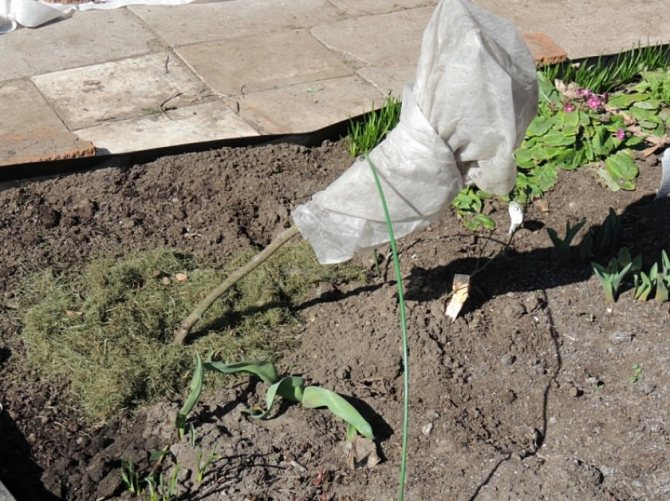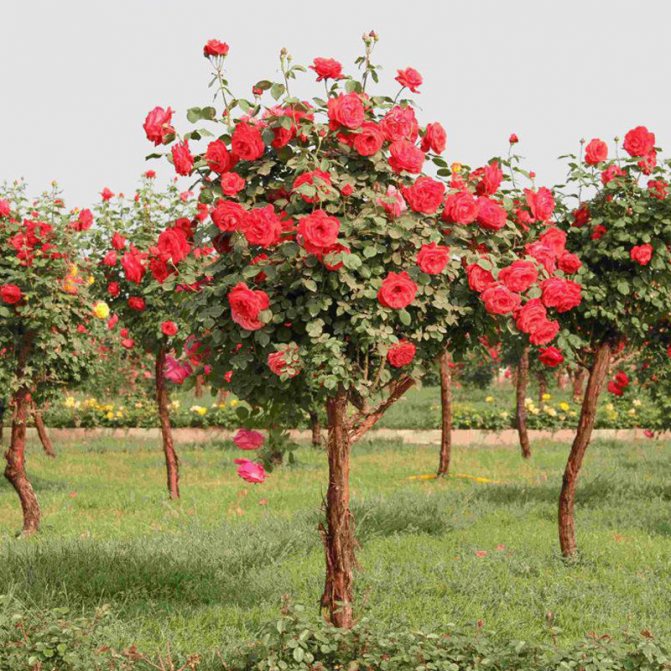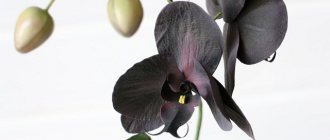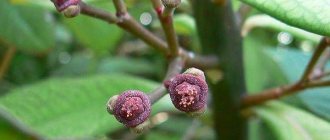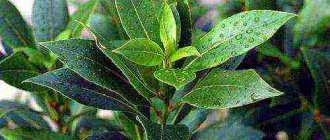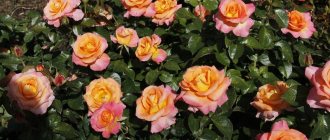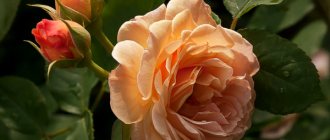Varieties of stock roses
In modern breeding, three main groups of rootstocks can be distinguished, which are used to form standard roses:
1. The Caninae is the most common section, with conflicting species characteristics:
- Rosa canina is a species used since 1824. On the one hand, the stock itself does not reproduce well and grows slowly, but it belongs to long-livers. It does not differ in high winter hardiness, but hybrid tea roses grown on it tolerate frost well;
- Heinsohn's Record - used in Germany for grafting yellow roses, the advantage is the ability to activate low-growing grafts of grafts;
- Pfander's Canina (the most winter-hardy) - well suited for almost all varieties of garden roses, except for some yellow varieties of the hybrid tea class.
2. In the section The Synstylae, only two types of rootstocks (Moschata floribunda and Multiflora) were selected, which are used for vigorous varieties of roses. They are distinguished by unpretentiousness, adaptation to poor sandy loam soils, high disease resistance and cold resistance.
3. The Indicae section is known from the stock Odorata 22449. This species is suitable for countries with mild climates, but it is indifferent to both drying out and waterlogging. Almost all varieties of garden roses take root on it. Subspecies Moore's Odorata, bred later, is more winter-hardy.
Planting a standard rose with your own hands
First of all, you need to decide whether you can plant the variety you like on your own, or is it easier to buy roses already on a finished stock. When choosing a seedling, pay attention to:
- crown - it should be well developed, with strong shoots;
- the trunk is even, well lignified, with a diameter of at least 1 cm;
- leaves and root collar - plants suspected of having rose disease are discarded.
Having decided on the variety, you need to get information on which group of garden roses the plant belongs to - in the future, this fact will affect the correct care of roses.
The requirements for planting a standard rose with your own hands are the same as for a regular one:
- spacious pit for distributing the root system;
- slightly acidic soil reaction (pH = 5.5-6.5);
- the distance between trees - taking into account the diameter of the crown (as a rule, at least 1 m for medium-sized varieties).
Operating procedure:
1. A sturdy peg is installed on the bottom of the hole so that it is below the beginning of the crown.
2. The peg is installed from the side of the most frequent wind direction.
3. The depth of the underground part of the support treated with an antiseptic must be at least 50 cm.
4. The stake is located in the middle of the hole, slightly inclined towards the side opposite to the peg. The root system straightens out, the hole is covered with earth and rammed a little.
5. The trunk is loosely tied to the peg in several places. To avoid damaging the bark, you can wrap the trunk in a soft material at the attachment points.
6. The root collar is covered with earth to a height of 10 cm.
7. Aerial roots between the root collar and the ground surface are pre-cut.
8. At the bottom of the hole, you can pour a little nutrient mixture.
Chemistry
The seeds of the plant contain numerous lysergic acid amides, including Ergin, Ergonovine, and Isoergin. From this chemical group originates the well-known hallucinogen LSD.The psychoactive effects experienced after consuming the seeds are commonly attributed to Ergin (also known as d-Lysergic Acid Amide, LSA, or LA-111), although the validity of this claim is disputed.
In the United States, Ergin is on the DEA, Schedule III list. At the same time, the Little Hawaiian Tree Rose remains legal. Accordingly, the possession of any part of the plant is completely legal. At the same time, the extraction of Ergin in the United States is prosecuted by law, however, no cases have yet been recorded for it to work. The plant is not controlled there as a precursor of profiling substances, since the synthesis of LSD from ergine, although possible, is extremely impractical.
The seeds also contain glycosides. These compounds can cause some of the reported side effects from their use. Many believe that the furry seed coat is the main cause of "motion sickness", but this "fur" is known to be inert; most likely, the nausea-causing factor is contained in the seeds themselves.
Features of planting standard roses with your own hands
Due to the fact that standard roses need to be covered for the winter, the trunk should be planted slightly at an angle towards the fold. Before planting, you need to check in which direction it bends well. The root collar has a small seal - a lump, from which the trunk departs in an arcuate manner. This bend is the reference point for the bend vector.
When planting, the convex side of the bump is located closer to the support, and the stem is oriented in the direction of its laying. The direction of laying the trunk should be thought out in advance - if the tree, when bent, blocks the path, it will not be very convenient. The best direction for laying the trunk is towards the lawn. Initially, a fresh seedling should be tied to a support loosely, tightening the fasteners as the earth is compacted.
data-matched-content-ui-type = "image_sidebyside" data-matched-content-rows-num = "4 ″ data-matched-content-columns-num =" 1 ″ data-ad-format = "autorelaxed">
The next step is to protect the crown. So that the branches of the grafted plant do not dry out and become weathered, they are wrapped in wet material (moss, cotton wool, etc.). The state of humidity is periodically checked - the protection should not dry out. The shelter is removed as soon as the buds begin to appear.
If you already know how to grow roses, you can create a rose tree with your own hands. The main method is budding - grafting with a bud taken from a cuttings of another plant. Grafting is carried out on the root system of species roses (rose hips).
When choosing a root system for your tree, you need to consider:
- metabolic compatibility of rootstock and scion;
- the strength of the growth of grafted shoots;
- adaptation to existing climatic conditions and soil;
- the ability of the stock to give wild growth;
- resistance to diseases and pests.
As a rule, any catalog of roses, in the annotation for a particular variety, provides information on the best rootstock. In theory, any variety of garden roses can be grafted onto a stem. It is better to take a bud from the middle of the stem of a one-year shoot. To increase the chances of getting a positive result, 3-4 kidneys can be inoculated at once.
Whether or not the peephole has taken root, it will become clear after 3-4 weeks - the bud will begin to increase in size, and the leaf petiole will disappear.
You can also graft in another way - by cuttings inserted into the split of the rootstock trunk:
Do-it-yourself standard rose care
Care and cultivation of pink bouquets consists in the timely loosening and removal of the rootstock overgrowth. If the stock has released wild growth away from the trunk, you need to go deeper into the ground and chop off the roots, otherwise the decorative variety can be reborn into a rose hip.
For the winter, standard roses in the garden are covered. Pre-winter preparation begins long before the first frost:
- in August, stop feeding and watering;
- stock up with covering material;
- cut off all undeveloped shoots;
- shorten the main branches in accordance with the varietal affiliation;
- remove all the leaves;
- plants are treated with copper sulfate (1% solution) to protect against pests of roses.
With the onset of the first frost, the bole is covered with sand. When the temperature drops below -3 ° C, the trunks are completely covered.
Operating procedure:
- the tree is untied from the peg;
- the earth is dug up a little from the side of the fold;
- the stem is tilted and bent to the ground;
- the bent tree is fixed with slingshots.
The laid trunk is covered with spruce branches, sawdust, foliage, and the root system and crown are sprinkled with earth. You can dig a trench into which the trunk fits, and for the crown - a spacious hole.
The second method is more suitable in regions with mild winters. The trunk remains upright and tied with straw or spruce branches.
In areas with harsh winters, you can use a shelter with an air layer, but for this you need to build a retaining structure around the rose. Plants are wrapped with straw, spruce branches, then they put supports at a distance of 2-3 cm from the first layer, and the structure is wrapped in burlap or special covering material.
This method is the most reliable, but also laborious - the air gap creates a greenhouse effect when the temperature rises, therefore, during winter thaws, the plant needs to be ventilated.
You can remove the shelter only when there is a threat of severe frosts. It is better to do this gradually, accustoming the tree to cool weather.
The beauty and extraordinary shape of the standard rose is worth the little attention it takes to grow it.
rose flowers
Roses are ornamental plants, which take the first place in terms of beauty and duration of flowering, pleasant and delicate aroma. The rose flower has been a favorite of many peoples of the world since ancient times. The image of the flower was found on the silver coins of one of the tribes in Altai, who lived 5 thousand years before our era.
The rose is called "the queen of flowers", as the best decoration of the garden, it was sung by poets and legends about it. For example, an ancient Indian legend speaks of the goddess of love, beauty and fertility, Lakshmi, who emerged from rose petals.

The beauty of a bush with blooming roses also attracts modern people. It is planted in parks in southern cities and in sunny plots of summer cottages of a country house. Rose is a very grateful plant that, with proper care, will delight you with its flowering every year.


According to the topic of the article, we will focus on examining the varieties of roses with photos. Choose roses for your garden, purchase, and in the next article we will learn how to plant in open ground and care.
It is customary to subdivide rose bushes into park and garden. We are more interested in garden roses, which are divided into the following groups: remontant, hybrid tea, polyanthus, Floribunda, patio, climbing, ground cover, shrub (shrub), standard. Moving on and looking at each group with a photo.
Application of Hawaiian rose seeds
Hawaiian rose is actively used for medicinal purposes as a tonic, as well as a strong aphrodisiac, treatment of diabetes and male infertility. A small dose does not have a strong psychoactive effect, so you should not be afraid of side effects. But an increase in dosage can provoke the occurrence of side effects, the appearance of hallucinations.
The use of MGDR is similar to the effect of LSD. It is important to note the effect of use for each person is different:
- nausea;
- vomiting;
- weakness;
- euphoria.
Hawaiian rose has an effect from 7 hours to 12. Much depends on the individual characteristics of a person. Many people, having tasted the seeds of the Hawaiian rose, compared the effect to drugs.
To get rid of the development of nausea, it is necessary to consume seeds exclusively on an empty stomach, in an amount not exceeding 8 pieces.Before that, they must be thoroughly peeled and crushed. Then insist them in water for 20 minutes and drink the resulting solution.


To enhance the desired effect, shamans insist the seeds in their own saliva. The enzymes contained in it help to better release the active constituents.
Hybrid tea roses. Rose varieties
Rose varieties are obtained from crossing remontant roses with tea roses. The bush is low (60 - 80 cm). The leaves are large, beautiful, of various shades. The flowers are of various beautiful colors, differ in a varied pleasant aroma, large, double, single or collected in small inflorescences.
Flowering lasts 30 - 35 days, then there is a break of 15 to 30 days, after which flowering continues until late autumn. Flowers are very decorative in bush and standard form, in flower arrangements, used for cutting. Each flower that forms on a bush or on a standard tree is a work of art. This is a real "classic" rose.
Variety - Baccara
The flowers are geranium-red, bright, 9-10 cm in diameter, double (80 petals).
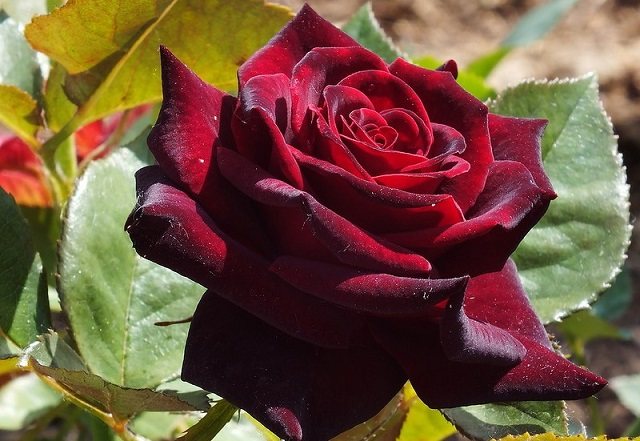

Variety - Valentina Tereshkova
The height of the bush is 50 - 70 cm. The flowers are pink, elongated-goblet, 8 - 10 cm in diameter, double (70 petals), very fragrant. Abundant flowering.


Variety - Alinka
A charming, large double flower up to 10 cm in diameter. Rose petals with an amazing color transition from golden yellow at the base to a scarlet, coral-red edge, shimmering with silk velvet. The aroma is subtle and delicate. It blooms from summer to late autumn, without reducing its decorative effect.
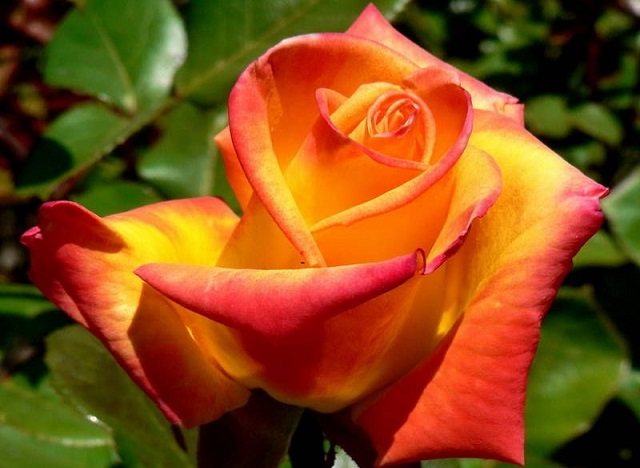

Variety - Golden Autumn (Zolotaja Osen)
The bush is medium-sized. The flowers are golden-orange with a lemon-yellow base, large 10 - 12 cm in diameter, double (30 petals), fragrant.
Variety - Karina
The flowers are large, goblet, graceful in any weather, with a constant pale pink color of the petals and a rich pleasant aroma. Blooms all summer until autumn.
Grade - Diamond wedding ((Diamond jubilee)
Gorgeous flowers, like a diamond. Very large, up to 15 cm in diameter, cupped, double, with ivory petals.
Variety - Broceliande
Each petal contains "raspberry and cream", like a delicious melange. The flowers of the rose are large, up to 12 cm in diameter, double with a very pleasant scent.
Variety - Elina
Flowers are warm vanilla and pastel lemon shades, very large, 13 - 15 cm in diameter, elegant classic shape. It blooms all summer until autumn, the aroma is pleasant, exquisite.
Variety - Ingrid Bergman
An elegant classic rose, bright and unforgettable. The flowers are large, up to 10 cm in diameter, densely double with terracotta-red petals of velvet shades of ripe cherry color. The aroma is delicate and unique.
Enthusiastic catalog descriptions and praise for the shape of the flower can give you the impression that the hybrid tea rose is the ideal of the rose. This is not entirely true. Some varieties form bushes with ugly rigid branches, and their flowers quickly deteriorate in wet weather. They bloom less often and are inferior in brightness to Floribunda roses. They demand good growth conditions.
Be careful when choosing roses in this group. Not all varieties are suitable for garden decoration - some are designed specifically for exhibitions, and their beauty can only be judged by judges.
The hybrid tea rose is rightfully considered the queen of roses - but it is not without flaws either.
How to grow a rose on a stem: fertilizers and fertilizing
Standard roses are fertilized annually, and more than once. In the spring, after pruning, mineral fertilizers are applied to the soil with a predominance of nitrogen fertilizers along with humus. Humus leaf land is taken from old forest belts, removing the top layer up to 10 cm thick. This is an excellent soil for other cultivated plants, it is formed from rotted leaves and branches of woody plants.
As you can see in the photo, when caring for standard roses, soil fertilizer mixtures are used, which are purchased in specialized stores, the doses of their use are indicated on the packages:


In the process of caring for standard roses, it is better to time fertilizing with the phases of development of roses:
- after the first flowering;
- after the second flowering (complex mineral fertilizers alternate with mullein infusion);
- after the third flowering in late summer - early autumn (potassium-phosphorus fertilizers are good).
During the summer, foliar dressing is necessary with solutions of Kemira Lux, Solution, potassium humate alternately. "Solution" and "Kemir lux" contain nitrogen, phosphorus, potassium, magnesium and microelements: boron, copper, iron, manganese, molybdenum, zinc. These substances give not only good growth and development of standard roses, but also partially protect them from diseases.
One of the features of growing standard forms of roses is the need for regular spraying. This is done in the morning after the dew has dried or in the evening with a solution at a concentration of 1 g per 1 liter of water. Ordinary bush roses can also be treated with these fertilizers.
Floribunda roses - beautiful roses
Varieties of this group are obtained by crossing polyanthus varieties with hybrid tea, Pernetsian and other varieties. After the rapid spread of Floribunda roses, polyanthus roses have somewhat spent their purpose.
By the nature of the inflorescences, they are similar to polyanthus, and by the size of the flower and often in shape, they resemble hybrid tea. The flowers are simple, semi-double and double. There are fewer of them in the inflorescences than in polyanthus and they are not so densely located. Several flowers open simultaneously in each brush. Floribundas have all the colors typical of hybrid tea. Many varieties have a scent, bloom profusely and for a long time.
The following varieties are suitable for the conditions of the Urals: Alain, Ankor, Glacier, Display, Fire Flame, Charleston, Highlight. Like all garden varieties, they require shelter for the winter. They look great in landscaping and in various compositions. They occupy a leading place in the design. Good in planting in flower beds.
Floribunda roses are on average more hardy, more reliable in damp climates, and easier to care for than hybrid tea beauties.
Variety - Anna (Annapurna)
A charming white rose like first love. The flowers are single or collected in small inflorescences, double, graceful goblet-shaped, milky-white petals, pleasant, delicate aroma.
Variety - Arthur Bell
Translated means - a beautiful and irresistible handsome gentleman. The flowers are large, amber-yellow, 10 cm in diameter, semi-double and very fragrant. The stamens are bright red-crimson - they glow beautifully in the gold of the petals.
Variety - Hot chocolate
The rose attracts attention with its extraordinary coffee and terracotta pink petals that change color as it blooms from a light salmon orange to a rich brownish cherry. Outlandish chocolate rose.
The flowers are large, up to 9 cm in diameter, with a delicate delicate aroma, are resistant to rain and are especially good in cold autumn weather. The height of the bush is up to 1 meter.
Variety - Berleburg
The flowers are large, up to 8 cm in diameter, double, the petals are pink-crimson with peach and fuchsia shades. The aroma is delicate and refined. The height of the bush is up to 80 cm.
Variety - Claire renaissance (Klair renaissance)
The flowers are gorgeous, large up to 12 cm in diameter, as they bloom form a huge bowl with many wavy silk milky pink petals. The aroma is fresh, delicate. The height of the bush is up to 150 cm.
The use of roses of this group creates the opportunity to give the landscape design of a suburban area of many colors. They can be grown as a bush or as standard. Among them there are varieties for planting in hedges, as well as dwarf varieties. Nearly all dwarf varieties, around 50 cm tall, have recently been singled out as a special group of popular patio roses.
Rose varieties - patio
The patio rose group is a very recent formation.There is no exact definition of a patio group. Now this group includes varieties of Floribunda roses, which do not exceed 45 - 55 cm in height and form dense bushes. These varieties have smaller flowers and leaves, but they bloom profusely throughout the season. The popularity of the patio group is growing.
Variety - Anna Ford
It is a lush small bush, dressed with small leaves and strewn with inflorescences of many small flowers. Requires shading for part of the day. The leaves are dark and highly shiny.
Variety - Gentle touch
The flowers have the characteristics of hybrid tea roses, which become flat over time. The inflorescences are strong and consist of many pink flowers that appear throughout the season. Takes a high place among other patio varieties.
Variety - Sweet magic
Golden yellow flowers are collected in large, glowing racemose inflorescences. Over time, the petals take on a rosy blush. The zone is good for growing in a tub, along the edge of a flower bed or curb. The aroma is quite intense.
Cascading rose
For cascading boles, completely different varieties of roses are selected. Paul Noel has lush pink blooms, has an attractive aroma that can be felt from a distance. Rosarium Vetersen is a variety that is also suitable for this type of bole, the flowers are bright pink, with a touch of fuchsia, looks good next to hedges that are neatly trimmed.
If you prefer white roses that are as pure as pearls, check out Alba Meidiland or Schneewittchen. The color of the second grade is softer and softer, but it will delight longer with flowering shoots.


Of the bright colors, Leverkusen can be offered, blooming with bright yellow flowers. From the cascading family, there is also a classic of scarlet colors - Scarlett Maylandecor. All these varieties, regardless of the color of the rose petals, resemble hanging bright carpets of blooming greenery or fabulous waterfalls. Varieties, of course, play a big role when the future owner chooses such a miracle, but you also need to know how to care for them.
Climbing roses
The climbing rose variety has been irreplaceable from the last century to the present day. Hybrids appeared as a result of crossing a multi-flowered rose with North American climbing and hybrid tea. So a new group of tall shrubs appeared with abundant flowering on last year's shoots. Flowers in large inflorescences, simple or double, varied in color.
Their main purpose is to cover part of the house, trellises, gazebos, fences, pergolas, architectural structures,
garden arch,
old trees.
The climbing rose group is divided into five types:
- Climbing multi-flowered
- Climbing large-flowered - with single or few flowers in the inflorescence
- Climbing racemes - with inflorescences like Floribunda roses
- Climbing species - wild roses and their close relatives
- Climbing miniature
Unfortunately, the climbing forms of these roses usually do not retain the ability of bush forms to re-bloom and give only one or two waves of flowering.
Variety - High hopes
The flowers are double, pale pink, fragrant. The plant is unpretentious, with shiny, beautiful and healthy foliage with unusually abundant flowering at the end of the season. suitable for decorating arches and pergolas. Repeated flowering.
Variety - Golden fragrant (Golden parfum)
Flowers with honey aroma. Amber-yellow goblet buds open into bright, like saffron, densely double flowers with a diameter of 8 - 10 cm. It blooms profusely with a short break. The bush is very powerful, vigorous, up to 3 meters high.
Variety - Sympathie
Flowers of exquisitely elegant shape, terry, with a spectacular, rich red-crimson color of velvet petals. The aroma is pleasant, quite strong. It blooms continuously all summer and autumn, keeping the excellent shape and beauty of the petals in any weather. Height 250 cm.
Ground cover roses
Before buying such a rose, it is better to find out what size it reaches when it grows. The bush can reach a height of 20 cm to 2 meters and is divided into four subgroups:
- Small creeping roses 30 - 45 cm high and no more than 1.5 meters wide
- Large creeping roses over 45 cm high and over 1.5 meters wide
- Small drooping roses reaching 95 cm in height and about 1.5 meters in width
- Large drooping roses with a height of at least 1 meter, a bush width of 1.5 meters or more
In the varieties of the first two subgroups, the stems grow horizontally and can sometimes root at the nodes. The cultivars belonging to the last two subgroups form sprawling bushes with arched drooping branches.
Rose varieties are unpretentious, bloom profusely, many all summer, are disease-resistant, winter-hardy. Flexible shoots allow them to be tilted to the ground, which provides a good wintering period. Plants of the ground cover group can be planted on flower beds and retaining walls, decorate slopes and mask ugly places. They are also interesting in group planting.
Due to its high vigor and strong branching density, the rose grows rapidly, forming a dense, well-leafy bush with a wide gobitus, where the diameter is much greater than the height. A delightful, elegant living carpet blooms profusely until the autumn frosts.
Variety - Suma
This is a Japanese variety. It blooms not only in summer but also in autumn.
Sort - Magic carpet
The rose is original - it has small lavender flowers with a spicy aroma, located along the entire length of arcuate curved branches. It is also grown in a tub or basket.
Side effects
Hawaiian rose is capable of provoking two dangerous phenomena:
- Contraction of the uterus. This condition is especially dangerous for women in position. The contraction can provoke a miscarriage. Therefore, pregnant girls are strictly prohibited from consuming seeds. Also at risk are people who have problems with working in the genitourinary system.
- Nausea. This symptom appears in most people who consume the plant. The reason for this is the special components contained in the flower. But not every user suffers from this side effect. For some individuals, everything happens without disturbance.
The Hawaiian rose is a poorly studied plant, so many law enforcement agencies may consider it a narcotic drug. Therefore, it is better to limit yourself from using it unnecessarily.
Plant characteristics
Depending on the variety, the plant height can reach 1.5 m. Park roses are distinguished by long and early flowering (about 2 months) and high frost resistance. Bloom in late May or early June - earlier than all other rose bushes.
For your information! Breeders have bred varieties of park roses with double flowering per season.
The bushes of such roses are voluminous and lush. The buds are large, have many petals (about 100-150 pcs.), In most varieties - double. Roses have a very pleasant intense scent. Pollinated by insects and wind.
In appearance and some features, the park rose looks like a hybrid tea. Both belong to the same genus Rosehip, have double buds, love light and careful care. But there are still differences - different degrees of frost resistance and the need for pruning.
The hybrid tea rose is very sensitive to cold weather, while the park rose quietly winters even in regions with a harsh climate. A park rose does not require pruning, and a hybrid tea should be pruned about 3 times a year. Due to its bushiness, the rose of the park type is ideal for the formation of hedges, which cannot be said about the hybrid tea group, since its representatives have a small height, but their colors are much richer.
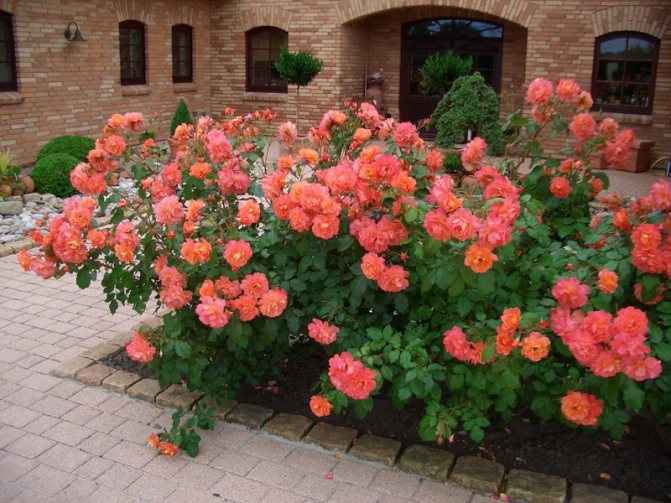

Park roses
What is a standard rose and how to create it
People who are far from floriculture do not know that a rose in the form of a tree is actually not a rose.An unusual shape is obtained by grafting roses of various varieties to the root shoot - the stem (it is called the trunk). Depending on its height, roses are obtained that grow as a tree in the garden, of different heights.
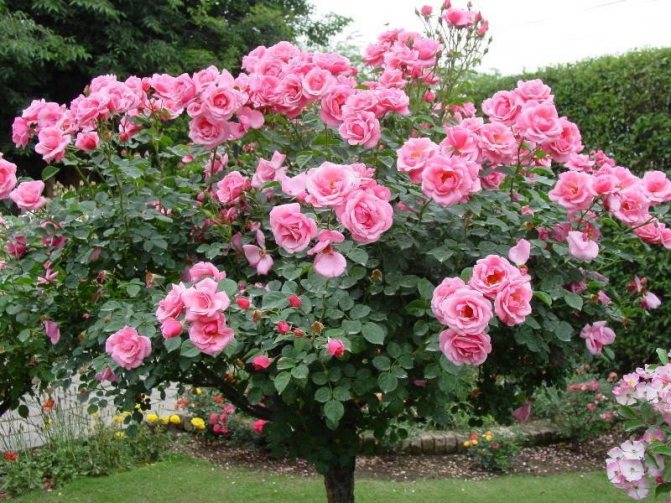

What a tree rose looks like
Advantages and disadvantages of such a rose:
| Pros of a standard rose | Cons of a standard rose |
| more abundant flowering than the stem version; | impossibility of reproduction; |
| increased winter hardiness; | problems with growing stock. |
| high decorative effect. |
For your information! In some European countries, experiments are underway on the seed method of propagation of the standard rose. And success has already been achieved for some varieties.
Characteristics of species and varieties of crops
Park roses are classified into numerous types. The most common names and descriptions are:
Floribunda
The height of these roses is from 30 to 100 cm, the diameter of the buds is from 4 to 10 cm. They bloom in the middle of summer and have numerous colors. The most popular varieties:
- park rose Remy Martin,
- Fluorescent.
Rose hips
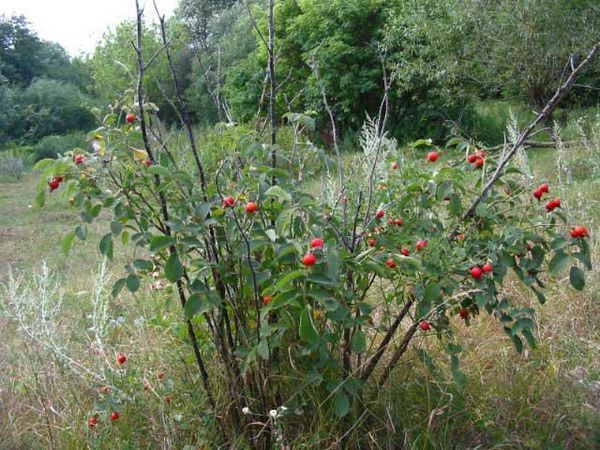

Rose hip
Their height is up to 3 m. They require shelter from frost for the winter. Among florists are valued:
- rose Louise Bugnet - white rose,
- Marchenland.
Musk hybrids
These varieties reach a height of up to 4 m, have large spherical buds. The diameter of the flowers is 6-8 cm. The most popular musk hybrids are:
- Elmshorn rose, also known as Elmshorn rose,
- Likhterlo.
Historical roses (old varieties)


Likhterlo
Most often, their height is 90-140 cm. These flowers have wide spreading bushes. Roses can grow in the shade and have a strong scent. The most popular variety is Jacques Cartier pink rose.
Shrubs
This group appeared 50 years ago. All shrubs are considered shrub types. They are high, low, creeping, climbing. They are not afraid of severe frosts. The flowering of such roses is lush and abundant, as well as prolonged or repeated (in remontant species). The aroma is very expressive. Unpretentious varieties:
- rose Hope for Humanity,
- Rose Moden Fireglow,
- Rose Ghislaine de Feligonde (Ghislaine de Feligonde),
- Rose John Franklin,
- Rose J.P. J. P. Connell,
- Rose Agranta.


Rose Agranta.
Explorer Series
These are high quality Canadian roses. It takes root well in Russia. Disease and pest resistant. They bloom for a long time, and most varieties are remontant (bloom 2 times per season). They smell faint. Colors from light to dark red. The disadvantage is poor resistance to prolonged precipitation. Most often, flower growers buy for planting Cuthbert Grant roses, also known as Cuthbert Grant roses.
Bush roses
Their height is from 25 cm to 3 m. Shoots on perennial bushes can be annual. There are varieties without thorns. The size of the flower reaches 80 cm in diameter. This group has a variety of colors. The shape of the bud is spherical, conical, flat, peony. The shape of the bush can be spreading or in the form of a pyramid. The most popular variety in this group is the Eifelsauber park rose.
Features of planting and care


Rose care is not difficult
Caring for park roses is easy. Better planted 1-2-year-old seedlings with a closed root system. Before sending to open ground, you need to inspect the roots for rot damage. Saplings are planted from each other at a distance of 70 cm, no less, since the park rose bushes strongly and needs space.
The place for the rose should be protected from strong winds and drafts. Better if it is a small slope towards the south. It is not recommended to plant nearby plants that have a strong pungent smell, which will drown out the aroma of a rose bush. Under the trees is also not the best place, as they create a lot of shade, which roses do not like very much. In addition, they will not have enough moisture there.
Note! It is strongly not recommended to plant park roses in lowlands and in swampy areas.Excessive humidity, especially during spring rains and floods, will be detrimental to flowers.
A park rose needs loamy soil. If the soil is clayey in the flower garden, sand or a little humus should be added. If the soil, on the contrary, is sandy, then compost should be added. This is very important, since the further development of the seedling depends on the quality of the soil.
You can plant park roses both in spring and autumn. However, during an autumn planting, it will be necessary to insulate the still fragile seedling and cover it with non-woven material, since the cold and low temperatures for its root system in the first few years are destructive. Unlike other varieties, this rose does not need additional feeding in the first year of life.
It is important to constantly loosen the soil throughout the season. In the second year, in the spring, you can fertilize with the introduction of natural fertilizers (manure). In the fall, before the cold weather, you need to huddle the bushes about 20 cm.This will help her not to freeze and survive the winter well.


Loosening the soil
In summer, frequent watering is not required. It should be rare but abundant. It will be enough to have one bucket under the bush once every 10-12 days. The rare introduction of a large amount of water at a time will harden the roots, which are forced to seek moisture at great depths in the soil. Thus, in winter, they tolerate frost better.
Frequent and poor watering only harms the root system. Because of them, the roots grow poorly in depth, remaining on the surface. Thus, they are susceptible to freezing, and when loosening, there is a chance to damage them.
Note! Forming lush rose bushes requires some knowledge. So that they grow in width, it is advised to treat the bushes with growth stimulants in the spring. Many people use sodium humate for this purpose.
In the middle of autumn, the bushes can be pinched or cut off by no more than 5 cm. Only young, overgrown shoots should be pinched and cut off. If there are too many of them, you can remove unnecessary ones, leaving a few of the strongest (5-7 pcs.), Forming a bush as required: in the form of a ball or somehow differently.
Reproduction of park roses occurs in several ways, but the most popular option is cuttings.
You can root a young shoot in the ground without cutting it off the bush. To do this, the branch is cut in the part where the leaf grows, bent to the ground and fixed with a spacer. Next, you need to sprinkle the shoot with earth and water it periodically. The next year, you can cut it off from the mother bush and transplant it to another place.
Another way is to cut the cuttings. Shoots cut in summer are planted in damp ground and form a mini-greenhouse, covered with a transparent plastic bottle. During the month, the cuttings can only be sprayed, not watered. The transplant can be performed after a year.


Rose transplant
Features of caring for a tree rose for tree formation
All growers know the name of a rose that grows like a tree. But people encounter the peculiarities of growing only after buying a plant. Care consists in watering, feeding, loosening the soil, treating pests and diseases, as well as removing side shoots and old branches.
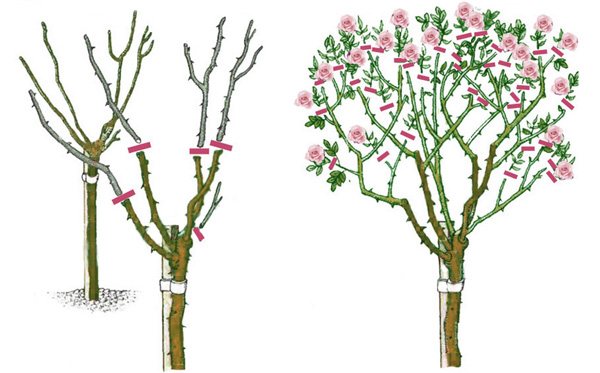

Rose bush formation
Watering rules and humidity
It is important to achieve a balance in the moisture content of the soil and air. Roses are afraid of dampness, and the place for their growth must be well ventilated. Plants do not need to be placed in the lowlands. Fog often collects there, which contributes to the development of late blight.
The amount of watering will vary depending on the composition of the soil. Heavy soil does not allow water to pass through well, which leads to decay of the roots of the flower. The tree does not like drought; for abundant flowering, the bush should be watered often. In arid places, the rose garden is watered several times a week.
You should know! With a lack of moisture, the buds of the plant crumble.
Top dressing and soil quality
Although the tree rose is grown on a wild rootstock, which is not afraid of poor soils, it does better in clay mixtures. Acidic soil is diluted with sand, depleted soil is fertilized with humus.
In the spring, mineral fertilizers are applied under the bush. Top dressing with a high potassium content stimulates the flowering of the tree.
Loosening and mulching
To ensure aeration of the root system, in the near-trunk circles, the earth is periodically loosened. Do this after each watering.
Young seedlings are mulched with bark, sawdust, coniferous litter. This protects the roots from drying out. For the winter, the base of the trunk is laid with mulch from horse manure.
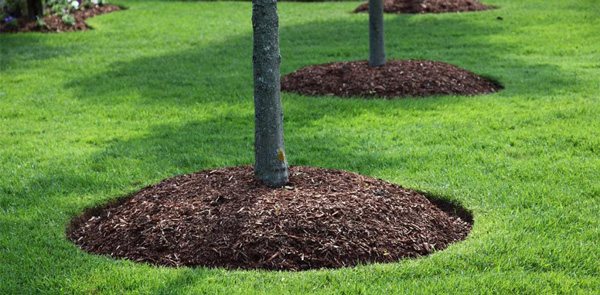

Mulching the stem circles of a rose
Pruning
Wild growth is actively forming on the trunk, which must be removed. The extra branches take away the plant's nutrients.
As the rose grows, the crown is formed, getting rid of the growth that grows inside the bush. You do not need to cut the stems too short, 6 buds are left on the handle. Also, old branches that have died out during the winter are removed, and young shoots are shortened.
The operation is performed with a pruner or lopper, cutting off the branch half a centimeter above the bud. The floor is cut at an angle of 45 degrees, and the open wound is smeared with garden pitch.
Bush pruning is carried out after flowering, in late autumn. So, before winter, the plant will not have time to start new shoots. In the spring, pruning of the bush is done before the start of sap flow.
The main diseases and pests of culture
Most often, park roses suffer from the following ailments and parasites:
- Powdery mildew. This is a gray bloom on the leaves or the entire bush. Foliage, as a rule, dries up and falls off. The disease threatens the death of the entire bush. For treatment, you need to spray the rose with a solution of copper sulfate, Bordeaux liquid or a copper-soap mixture.
- Rust. In spring, bumps can be seen on stems and foliage. Below on the leaves, empty bubbles form with spores of the fungus, which is the causative agent of the disease. The affected areas are cut out, the plant is sprayed with Bordeaux liquid, a decoction of nettle or wormwood, or soapy water.
- Black spot. Dark brown spots with or without yellow edges appear on the leaves. The affected leaves are removed, the bush is treated with a solution of foundationol, a decoction of horsetail or Bordeaux liquid.
- Gray rot. The fungus affects the stems and leaves of the rose, which are covered with a gray bloom and appear fluffy. The buds on such bushes fall off, rot, do not bloom. Small sores may also appear, and the leaves may turn yellow and fall off. To prevent disease, the bush is treated with a solution containing manganese.
- Insects. Various beetles, mites, butterflies and aphids seriously harm plants. Defeats are always visible to the naked eye. The injured leaves are removed, the insects are collected, and the bushes are treated with insecticides (fufanon, actara, actellik) or soap solutions. You can use decoctions of tobacco, garlic and onions with pepper. Someone also uses kerosene, but safety measures must be observed with it.
Park roses are an excellent choice for those who cannot afford to spend a lot of time caring for garden flowers. Unpretentious in cultivation, they will become the highlight of any personal plot.



